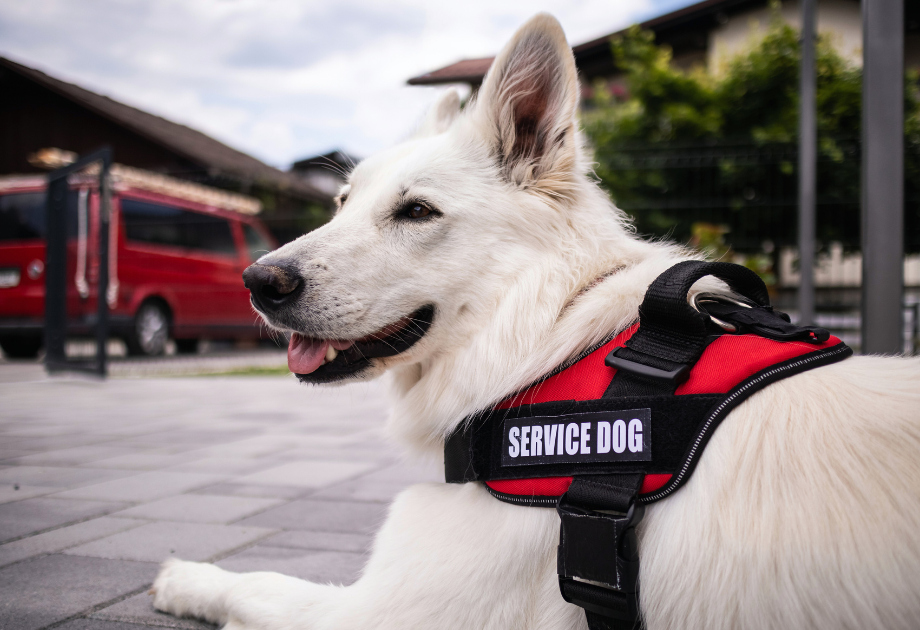Handling Pet Conflicts in Your Community Association the Right Way
Handling Pet Conflicts in Your Community Association the Right Way
(1).jpg)
Pets bring joy, comfort, and companionship—but in shared living environments, they can also be a source of tension. Barking, unleashed dogs, pet waste, or perceived aggression can spark frustration between neighbors and strain relationships. What begins as a minor complaint can easily escalate without a clear path to resolution.
In this blog, we’ll walk through how community associations can address common pet-related issues, how governing documents should support fair enforcement, and what steps to take when tensions rise. With the right structure, communication, and support, even emotionally charged situations can lead to positive outcomes—and a stronger, more peaceful neighborhood.
What Causes Pet Conflicts in Community Associations
The most frequent triggers for homeowners association disputes often sound familiar: dogs that bark constantly, owners who disregard leash rules, or residents who don’t pick up after their pets. These issues can feel personal, especially when one neighbor’s comfort or safety is affected by another’s pet.
In many cases, conflict stems not from malice but misunderstanding. Residents may be unaware of specific community pet rules, or feel that they’re being singled out unfairly. When rules aren’t applied consistently, frustration builds, and enforcement becomes even harder. That’s why clear expectations and reliable follow-through are important tools in preventing bigger issues.
What Your Governing Documents Should Say About Pets
Strong policies start with strong documents. Your community association’s governing documents should clearly outline expectations around pets, including:
- Acceptable types and numbers of pets
- Any restricted breeds or size limitations
- Leash and containment requirements
- Standards for behavior, such as barking or aggression
- The process for handling complaints or violations
It’s not enough for these policies to exist; they must be understandable and enforceable. Vague or overly complicated language can open the door to disputes. Boards should review these documents regularly, keeping pace with legal shifts, local ordinances, and resident expectations.
If you need help evaluating your policies, our consultation services are a great place to start.
Emotional Support and Service Animals

Requests involving emotional support animals or service animals often raise questions about how community rules apply. These situations require careful handling. Under the Fair Housing Act, assistance animals are not considered pets. This means that even if your community association restricts pets, those rules do not apply to qualified assistance animals.
Boards are required to make reasonable accommodations, and missteps in this area can lead to legal challenges. It is important to have a clearly documented process in place for reviewing requests. That process should be consistent, prompt, and respectful of both the resident’s needs and the board’s responsibilities.
Legal counsel can help you develop a procedure that aligns with current regulations while protecting your community from risk. A well-planned approach supports both compliance and fairness, which builds trust across the board.
De-Escalating Disputes and Responding to Resident Complaints
How your board or manager responds to complaints directly shapes the outcome. Prompt, fair, and clear communication helps build trust and shows that all residents are treated with the same respect. And when people feel heard, they’re more likely to respond calmly, even if they disagree.
Start with Documentation and a Neutral Mindset
The first step is to create a record. Log every complaint, including who reported it, when, and what they observed. This protects both the resident and the board from later disputes.
Approach each situation with objectivity. Don’t assume intent based on past issues or personal relationships. A neutral tone—both in conversation and in writing—helps calm emotional responses and creates a better environment for resolution.
Communicate with Respect and Specificity

Vague warnings like “keep your dog quiet” rarely resolve the issue. To promote cooperation, your response should be specific, respectful, and tied directly to your community association’s governing documents. Every message should include four things:
- The rule that applies
- The behavior that triggered the concern
- What the resident is expected to do next
- What the next step will be if the behavior continues
Focus on the behavior, not the pet or the person. The goal is to clarify—not criticize.
For example:
“Section 8.2 of our pet policy requires dogs to be leashed at all times in common areas. We’ve received three reports in the past week that your dog has been off-leash near the clubhouse entrance. We’re asking that you comply with the leash requirement starting immediately. If additional reports are received, the board may issue a formal violation notice in accordance with our governing documents. Please contact the management office if you have questions or would like a copy of the pet policy.”
This message should be tailored to your association’s rules and procedures, but the structure remains the same. Clear, respectful communication like this helps residents feel included in the solution and improves the likelihood of voluntary compliance.
Be Consistent with Enforcement and Follow-Through
Inconsistent enforcement is one of the fastest ways to lose credibility. All residents must be held to the same standards, regardless of how long they’ve lived in the neighborhood, their relationship to the board, or past behavior.
When HOA dispute resolution looks arbitrary, resentment follows. If your team struggles with consistent rule enforcement, you might find these enforcement strategies helpful.
Know When to Escalate the Response

A single HOA complaint about barking might warrant a friendly reminder. But ongoing violations—especially involving aggression, safety risks, or refusal to comply—require a formal process.
Patterns matter. If the same issue keeps resurfacing, or emotions begin to escalate, that’s a sign to involve professional help. Legal consultation, HOA mediation, or support from a management company can reduce liability and help de-escalate serious concerns.
The Value of a Professional Management Partner
Having a neutral third party can ease tension before it spirals. That’s where our team at Management Plus comes in.
As your professional management partner, we provide practical help with HOA conflict resolution. We document and respond to complaints, deliver respectful reminders or violation notices, and assist with updating outdated or unclear pet policies. Our consistent, compassionate communication style protects both residents and board members.
We also help communities avoid common pitfalls by providing reliable enforcement support and policy guidance through our HOA management and condo association management services.
Build a More Peaceful Pet-Friendly Community with Management Plus
Pets and shared living can absolutely coexist. When communities lead with clarity, consistency, and compassion, even the most heated concerns can be handled productively.
Strong policies help set expectations. Clear responses help reduce misunderstandings. Professional support helps protect the integrity of the community while keeping peace among neighbors.
If your board is ready to improve pet-related enforcement or respond more effectively to rising concerns, we’re here to help. Contact us today to get guidance grounded in experience and built around your community’s goals.
